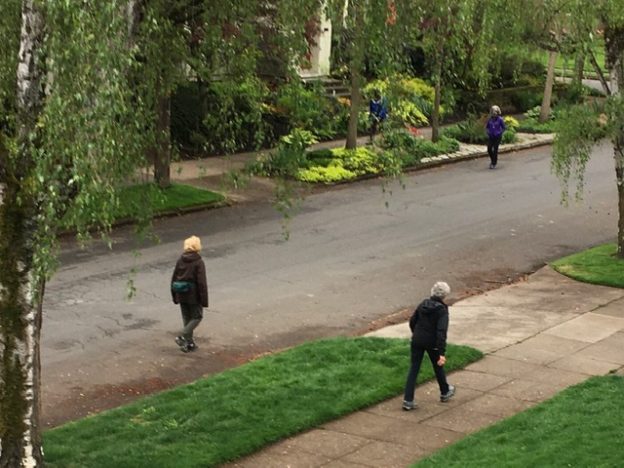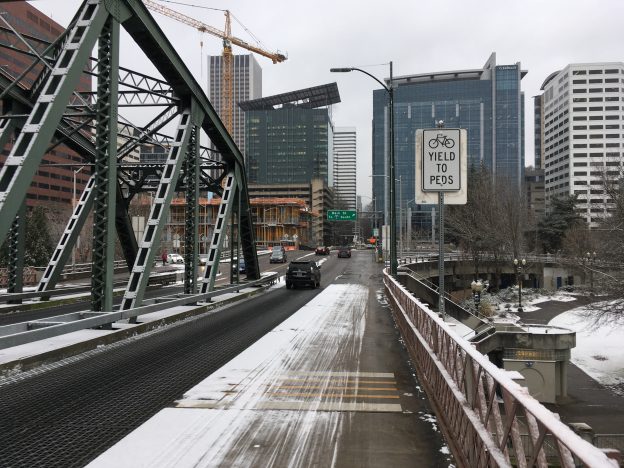In our current time of widespread “shelter in place” orders, heading out for a neighborhood walk or jog is among the few available forms of exercise. With relatively high volumes of sidewalk traffic, and a desire to maintain appropriate social distances, many people find it necessary to divert from the sidewalk and walk or run, at least temporarily, in the roadway. People on foot have ample right of way protections on sidewalks and when using marked or unmarked crosswalks. However, when they veer into the roadway, their rights with respect to other modes diminish significantly.
ORS 814.070, entitled “Improper position upon or improperly proceeding along highway,” is a pedestrian-equivalent to Oregon’s “mandatory side path law” for bicyclists. Just as ORS 814.420 requires bicyclists to use a bicycle lane when one is available (subject to several important exceptions), ORS 814.070 prohibits people on foot from “tak[ing] a position upon or proceed[ing] along and upon the roadway where there is an adjacent usable sidewalk or shoulder.” Of course, in the age of mandatory 6 foot buffers between sidewalk users, a pedestrian using the roadway could argue that the sidewalk was not “usable” because it was occupied by another (potentially virus-carrying) person. However, even if that pedestrian is legally entitled to be in the roadway, ORS 814.040 requires, when outside of marked or unmarked crosswalks, that they “yield the right of way to all vehicles upon the roadway.” In other words, while pedestrians enjoy significant right of way protections on the sidewalk and in crosswalks, when otherwise travelling in the roadway they must yield to vehicles, including cars and bicycles.
Fortunately, in many parts of Portland, motor vehicle traffic is light, making compliance with Oregon law while in the roadway relatively straightforward. However, in the city’s denser areas, or on streets with high vehicle traffic volumes, pedestrians forced to use the roadway face additional risk of injury without legal recourse.





